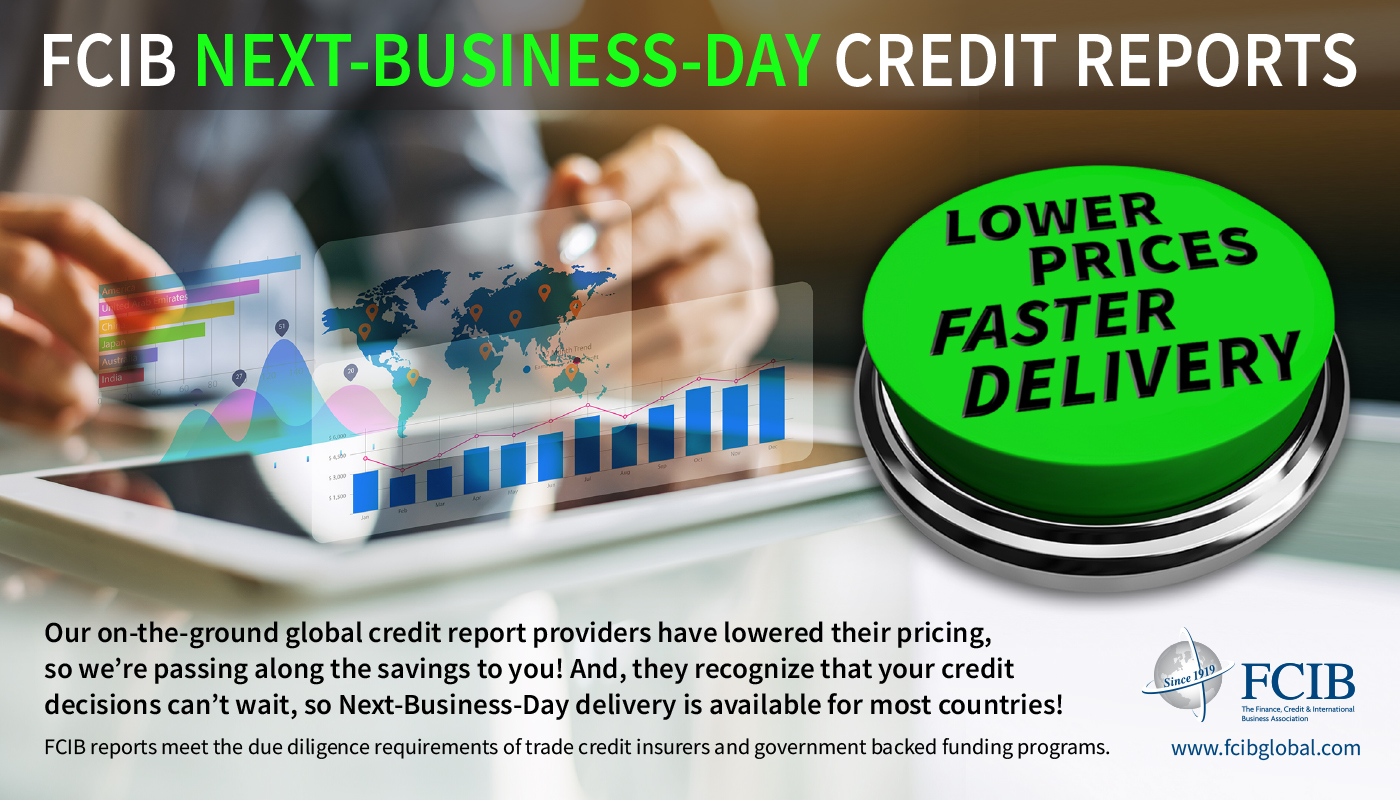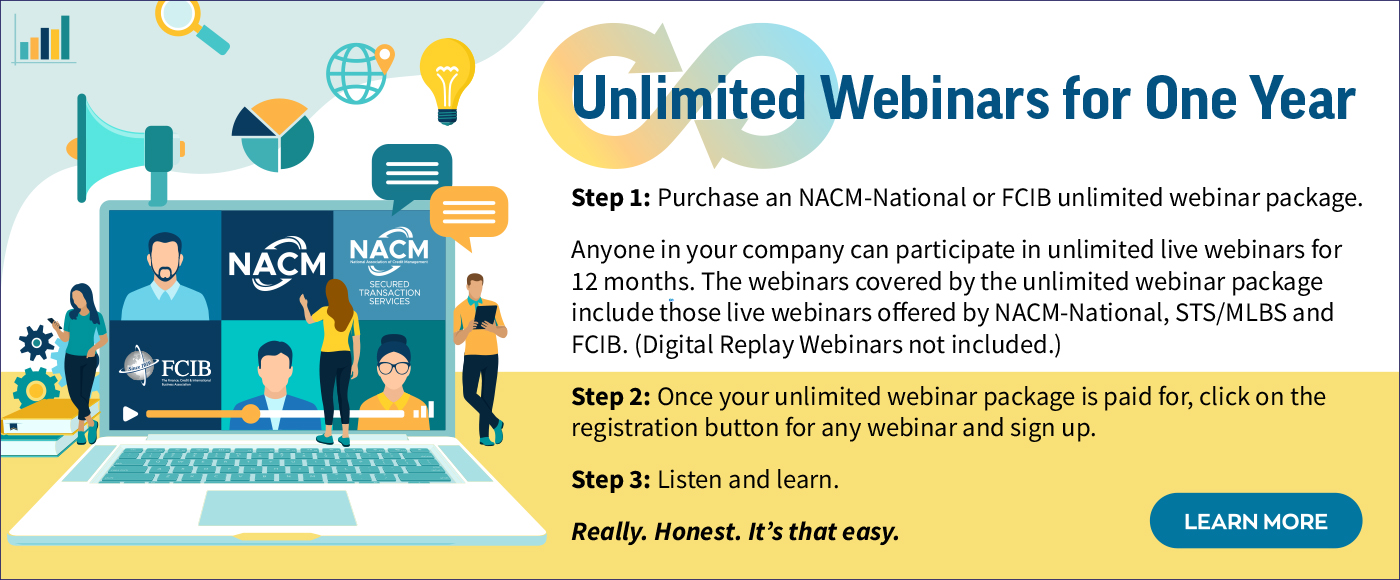eNews February 18
In the News
February 18, 2021
Biden’s Economic Focus
Chris Kuehl, Ph.D., NACM Economist
It has taken a bit longer than usual to get a feel for the incoming administration and its priorities. It appears the circus has finally left town, and there has been a bit more media attention directed at what we can expect for the coming four years.
As with all incoming presidencies, there will be an attempt to balance segments of the ruling political party as well as what the opposition can be persuaded to support (or at least not oppose). President Joe Biden has his left-wing to deal with as well as the moderates and the GOP prepared to oppose as much as they can. At this point, what does the economic policy look like?
Judging by the comments thus far, it has elements of old school Democratic rhetoric as well as the fierce nationalism of the late Ross Perot and even a bit of Donald Trump. The general label applied to this collection of policies has been Build Back Better. Thus far there are four or five elements emerging as the center of this policy.
The first is an intense focus on jobs; the second is a strong commitment to “American Made;” the third is a significant government role to ensure attention is paid to the first two priorities; and a fourth priority is likely to center around expanding minimum wage to $15 an hour and somehow health care will get wrapped in there somewhere. From the perspective of political feasibility. The first three priorities have a better chance than the latter two.
Thus far, nearly every policy statement made has included some reference to jobs. The basic idea rests on three pillars. The first is to protect the jobs that are still employing Americans. This has been manifesting in the proposals around trade policy as statements never fail to reference the need to protect U.S. jobs from foreign competition (a desire reminiscent of Perot and Trump). The difference in approach is designed to reduce the pressure on the consumer while pushing exports. That means less reliance on tariffs and quotas and more emphasis on promoting U.S. products and services overseas. The second pillar is to develop industries in the U.S. that will employ millions of people and will also make the U.S. globally competitive.
The heart of this approach seems to be the electric vehicle. It further appears that the push will come from a variety of directions. If development of the electric vehicle becomes the center point of the Biden White House (and it appears it will), the effort would be designed to address several key campaign pledges. The first would be a reaction to climate change concerns. If the electric vehicle expands past its current market share (around 2.5% of the market globally), the pollution that exacerbates climate change would significantly reduce. In order to make a significant dent, that percentage must be close to 40%.
Getting to that 40% level and higher would drive government policy in a number of ways: significant investment in making these vehicles in the U.S. by encouraging U.S. manufacturers, government-sponsored research, blocking foreign imports and providing subsidies for consumers. This effort to push electrics and U.S. manufacturing at the same time will be complex and will often create conflicts in terms of priority. If an imported electric vehicle is preferred by the consumer and gets the U.S. to that 40% goal faster, should it be restricted because it is not boosting U.S. manufacturing?
A third part of the effort will be in the infrastructure needed to support this conversion. Electric vehicles require power but not from fuel purchased at a gas station. They need charging stations that are every bit as ubiquitous as gas stations are now. People will seek to charge at home but that adds to their utility bills, and the utilities will have to add capacity to handle the demand. This means building more power plants. If these are going to be fueled by coal or oil or gas, the climate change impact will be significant. Can providing power from solar and wind and other alternatives be developed fast enough? A vehicle that can’t be charged because the grid isn’t sufficient will not be a popular option. The Biden plan calls for significant investment in creating a national charging grid and at the same time creating a new power grid that can handle the additional demand.
The most profound weakness in the plan at this stage is the expense. This would likely cost tens of billions of dollars if pursued in its entirety. The U.S. is already facing the highest debt and deficit levels it has seen since the end of World War II. Allocating the kind of money needed would involve much higher taxes and deep cuts to existing programs. Neither of these will be popular with the public or the legislators. The likely path forward will be halting. It is hard to determine whether a partial effort will yield the hoped-for benefits.
Data Breaches Decline 19% in 2020,
But More Work Must Be Done
Andrew Michaels, editorial associate
There is no end to the list of challenges 2020 presented in the U.S., particularly to those in the credit profession. Remote work requirements and policies alone required many credit departments to find new means of communication with their customers and for collecting payments, all while ensuring the protection of confidential company and customer data.
The Identity Theft Resource Center’s (ITRC) annual data breach report finds that companies’ efforts paid off with a 19% decrease in data breaches in 2020, despite the efforts of cybercriminals to take advantage of pandemic-related relief packages and funding. Nonetheless, security experts say companies and their credit departments aren’t out of the woods because fraudsters are learning to do more damage with less stolen information.
“We are seeing fraudsters increasingly target quality opportunities as opposed to quantity, and attack what they view as softer targets, which may be a reason for the decline,” said Suhas Gosavi, Fiserv’s senior vice president and general manager of B2B solutions. “An important consideration for any business, especially in a time where commerce and B2B payments are increasingly shifting online, is to ensure that your strategy for securing your digital perimeter is sound. The ability to safeguard your customer’s data through a well-developed IT infrastructure will be pivotal to the success of any business in the future.”
Released in December 2020, ITRC’s report presents the correlation between data breaches and data exposures, both of which are nothing new to the average credit department. Data breaches result in information that was stolen from a system without permission, while the data exposure involves data that was exposed for anyone to see but not stolen.
ITRC’s report reveals some refreshing news for 2020: Only 1,108 data breaches and exposures were reported by December 2020, a result slightly above the 1,104 in 2016, but well above the 785 is 2015. However, more than 2.5 billion individuals were impacted by breaches and exposures in 2016, dropping to 300 million in 2020, ITRC stated.
Although there were more data breaches than data exposures in 2020, more individuals were affected by data exposures than data breaches.
Data security is critical to credit professionals because they are tasked with accessing sensitive information to determine an overall credit risk profile and the most optimal form of payment, Gosavi said. Being able to use this data appropriately allows credit professionals to safeguard assets, deliver better outcomes and minimize risk.
“Cybercriminals are always looking to attack vulnerabilities, especially as new digital technology rolls out for the first time,” Gosavi said. “One specific tactic we are seeing that could impact a credit manager is cybercriminals gaining entry to a digital ecosystem via malware that can read key strokes and compromise credit card credentials. Because these cybercriminals are always adapting to tactics, it is important for any business to continuously reinforce their security strategy with the goal of keeping bad actors out of their ecosystem.”
Another root cause behind data breaches and exposures involved supply chain attacks, which ITRC said is becoming “increasingly popular with attackers since they can access the information of larger organizations or multiple organizations through a single, third-party vendor.” Nearly 700 entities in supply chain were affected in 2020, with the number of individuals impacted exceeding 42 million. Ranked from highest to lowest, attacks included third-party or supply chain cyberattacks and system or human errors as well as physical attacks.
“The trend away from mass data breaches and toward more precise and sophisticated cyberattacks doesn’t mean businesses can relax. Just the opposite,” said James E. Lee, the COO of ITRC. “They need to learn whole new ways of protecting their data.”
This can be accomplished by practicing “good cyber-hygiene practices.” The ITRC report lists the following best practices to protect breaches and exposures at work and at home:
- Do not reuse passwords—one unique password per account.
- Upgrade to a passphrase that is at least 12 characters long.
- Use multi-factor authentication (MFA) when possible.
- Consider creating online accounts so cybercriminals can’t create one in your name.
- Use a password manager, if needed.
Dual, or multi-factor, authentication should be a foundational element of any security protocol, Gosavi said. It requires a user to present multiple forms of identify before accessing any system. For example, users may need to enter a unique account password and confirm a randomly generated code sent to their personal mobile device.
These practices may prevent breaches or exposures. But what happens if they have already occurred? A 2020 IBM study finds it takes companies an average of 197 days to identify a data breach and an additional 69 days to contain the situation.
“You'll need to have your incident response team collaborate with staff at the third-party vendor to isolate and stop any ongoing breach,” wrote Michelle Wu, the senior director of product marketing at SecurityScorecard. “A speedy response is imperative; the faster you stop the breach, the less money you'll lose. If you can stop the breach in less than 30 days, you'll save over $1 million more than you will if you let it go on longer.”
Fiserv offers solutions that can alert business owners of an account breach, Gosavi said. More importantly, they offer solutions that can proactively detect fraudulent activity, Gosavi added. Proactive detection and fraud mitigation leverages advanced artificial intelligence and machine learning capabilities to ultimately stop fraud before it occurs.
NIBS Convenes BIM Executive Roundtable
on Construction Industry Digital Transformation
Diana Mota, Managing Editor
The National Institute of Building Sciences is working toward a U.S. building information modeling (BIM) standard. The organization met Feb. 4 with about 40 leaders from public and private organizations to discuss the need for a coordinated program to advance collaboration and innovation in the building industry.
As defined on buildinginformationmanagement.wordpress.com, BIM is:
A business process for generating and leveraging building data to design, construct and operate the building during its lifecycle. BIM allows all stakeholders to have access to the same information at the same time through interoperability between technology platforms.
The process can save money on large infrastructure projects and build synergy among all parties involved in the project, said Chris Ring, of NACM's Secured Transaction Services (STS). Project managers for certain trades such as HVAC, structural steel and elevator escalators might find it useful, Ring added. “For example, in HVAC, tonnage calculations per square foot are required. If the HVAC manufacturer is part of the BIM process, any change orders that alter tonnage calculations should be more transparent and harder to miss.” As an aside, Ring pointed out HVAC manufacturers would benefit from a clause in their contract that change orders may affect the final contract price. “If the HVAC manufacturer does not have this type of ‘change order’ clause in their contract, the HVAC manufacturer may be held to the original contracted price.”
Although NIBS has already developed a national BIM standard through volunteer efforts, it is not a comprehensive standard. Adoption across delivery and management processes as well as education and training has been at varied levels, and the U.S. faces continued challenges with data interoperability. To address these issues, NIBS is leading the effort.
Road to a National BIM Program
Its goal is to create a solution at a national scale to enable digital process standards that will streamline business, accelerate the effectiveness of the supply chain, provide predictable processes, improve project outcomes, drive efficiency and foster innovation.
At least three larger general contractors have been using this type of software, said Connie Baker, director of operations, NACM Secured Transaction Services (STS). “It helps improve build quality, which would be a great benefit to suppliers. If the quality of product and work is improved, that could mean fewer disputes and fewer disputes would mean faster payments.” It will be interesting to see if the U.S. can mandate BIM, Baker added.
Adam Matthews, of the Centre for Digital Built Britain, spoke to the United Kingdom’s BIM program that is viewed as a model for what can be done in the United States. The program cost about $5 million pounds and has led to 33% lower costs through a reduction in the initial cost of construction and the whole life cost of built assets and 50% faster delivery. “We started off looking at how we can drive savings,” Matthews said, mentioning that part of the goal was to drive better procurement practices and construction. “This was not a program just for the sake of technology.”
“NIBS has been working closely with CDBB and plans to use the UK program and materials they have developed as a guide with adaptations to fit the need for a collaborative public-private partnering approach needed to be successful here,” the organization states in a blog.
Roundtable participants included partners from the U.S. Department of State, U.S. Army Corps of Engineers, U.S. Department of Veterans Affairs, U.S. General Services Administration and U.S. Federal Highway Administration, along with private sector partners from Google, Microsoft, Amazon Web Services, Autodesk, Bentley, Epic, ESRI, HDR, Kieran-Timberlake and WSP.
Speed of vaccinations will play major role in the recovery of the global economy this year.
In 2021, the global economy is expected to almost recover fully from the major economic downturn in the first half of 2020 caused in most part by the Covid-19 pandemic. However, the pace of the recovery depends on how quickly people are vaccinated and lockdowns end.
At the same time, the pandemic continues to weigh on the outlook. Fiscal and monetary support remains essential to support economies. The economic cost of the pandemic will be felt more strongly in 2021 compared to last year, given its impact on labor markets, business failures and the medium-term fiscal position of countries.
Advanced economies are forecast to grow 3.9% in 2021, undoing most of the cumulative drop in GDP last year. Some of the uncertainty that hung over the market in 2020 has disappeared. In the United States, President Joe Biden is expected to follow a more consistent policy than his predecessor did. The trade deal between the United Kingdom and the European Union has removed the uncertainty of a hard Brexit. While damage is still inflicted by higher trade barriers, it is considerably smaller compared to a no-deal scenario.
However, Covid-19 infections continue to spread in a number of major advanced markets and lockdown measures remain strict. Due to these factors, most markets will not see GDP recovering to their pre-pandemic levels this year. Emerging markets in Asia have mostly fared better in managing the virus with China avoiding recession and expecting 8.8% growth in GDP in 2021 due to pent up demand. Latin America has the worst performance. Mexico received limited government support and faces a protracted recovery, while Brazil received a sizable fiscal package that limited the depth of the recession in 2020.
Current forecasts anticipate good pace of vaccinations resulting in permanent reduction in restrictions by mid-2021. Although, if vaccination processes are slower than expected and social distancing measures continue into the second half of the year, businesses may postpone or cancel investment amid uncertainty over the resulting government restrictions and future demand for goods and services. This will slow the economic recovery.
“This 2020 recession has been unique in that GDP and trade have been severely impacted, but insolvencies remained low due to the fiscal stimulus and temporary freezing of bankruptcy proceedings in many markets,” said Andreas Tesch, Atradius’s chief market officer. “This could change dramatically as stimulus is phased out. Cautious credit management including attention to the financial stability of your business and that of your buyers remain paramount to success.”
|
Upcoming Webinars |
|
Feb 23 |
Global Workshop: Building a Successful Automation Strategy (Part 1) Moderator: Najia Hernandez, ICCE |
| North Carolina: Notice to the Lien Agent vs Notice of Subcontract Speaker: Chris Ring |
Feb 24 |
|
Feb 25 |
Global Workshop: Building a Successful Automation Strategy (Part 2) Moderator: Najia Hernandez, ICCE |
| Letters of Credit Series: Choosing the Right INCOTERMS for Letters of Credit: Why International Commercial Terms Matter and the Role They Play Speaker: Richard “Chip” Thomas |
Feb 25 |
|
Mar 4 |
How to Lead
Speaker: Winthrop Jeanfreau |








